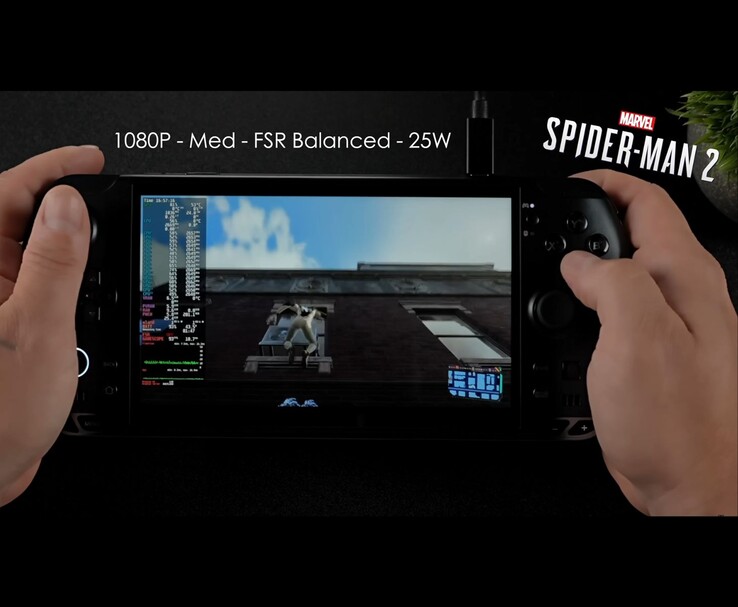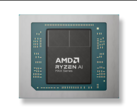This $1,500 Strix Halo handheld runs Cyberpunk 2077 on SteamOS at 1080p Ultra, 45 W, scoring 71 FPS — here’s how it compares with Windows 11 performance

The GPD Win 5 reportedly runs well with Windows 11, which it ships with, and can handle a variety of indie and AAA games. This raises the question of how the latest AMD Strix Halo-powered handheld would perform with a lighter, gaming-focused Linux distribution such as SteamOS.
This is exactly what YouTuber ETA Prime set out to find in their latest video. They began by installing the official SteamOS Hollow 3.8 main branch build on the GPD Win 5, the first version to fully boot on AMD’s new Strix Halo and Strix Point APUs.
According to ETA Prime, this release was chosen because it resolves the long-standing boot hang that had previously prevented SteamOS from running on these chips. With the updated boot chain in version 3.8, the GPD Win 5 now runs SteamOS natively, offering full controller detection, Wi-Fi and Bluetooth connectivity, and system-level functionality comparable to the Steam Deck.
The test unit features AMD’s Ryzen AI Max 385 APU paired with a 30-CU Radeon 8050S iGPU. It’s equipped with 32 GB of memory, which ETA Prime manually configured to allocate 16 GB for system use and 16 GB for the iGPU. SteamOS recognises the platform correctly under System settings as “Hollow 3.8” and lists the APU as the 385 model.
Strix Halo GPD Win 5 game performance on SteamOS 3.8
One SteamOS limitation on non-Deck devices remains TDP control from the stock performance overlay. As demonstrated by ETA Prime, power limits do not appear in the native menu on the Win 5, so they installed Decky Loader along with the SimpleDeckyTDP plugin. With that setup, the handheld can be configured anywhere from 4 W up to a reported 120 W slider range.
In practical use, ETA Prime keeps power between 20 and 45 W for handheld gaming, noting that the Windows 11 “Performance” mode on the GPD Win 5 defaults around 45 W and can spike to 65 W on battery. For SteamOS, the YouTuber generally maintained AAA titles between 25 and 45 W.
In their testing, Marvel’s Spider-Man 2 was the first title on the list. At 1080p, Medium settings, FSR Balanced, and a 25 W TDP, the game averaged around 71 FPS without frame generation. Switching to the "High" preset could produce similar performance by increasing power to roughly 35 W, the YouTuber mentioned.
Next up was Cyberpunk 2077. At 1080p, Steam Deck preset, and a 25 W TDP, it averaged around 74 FPS. At 1080p, Ultra preset, FSR Quality, and a 45 W TDP, the game ran at around 71 FPS on average. The Ryzen Max chips were observed to scale well with power, with 45 W comfortably sustaining 1080p Ultra gameplay. And we have seen that post 45 W, the Strix Halo chip starts to level off in performance.
Borderlands 4 at 1080p, Medium settings, FSR Balanced, and a 45 W TDP still dipped below 60 FPS at times. In comparison, the same title runs roughly 13 FPS faster in Windows 11 at similar settings, suggesting it may not yet be fully optimised for SteamOS.
Lastly, Hollow Knight: Silksong, an indie 2D title, was tested at a 6 W TDP with the frame rate capped at 60 FPS. Total system draw was about 10.5 W, implying nearly eight hours of runtime.
The YouTuber also tested titles such as The Witcher 3: Wild Hunt, Elden Ring, and Doom: The Dark Ages in their video, which is linked below.
SteamOS vs Windows 11 gaming performance
When comparing gaming performance between SteamOS and Windows 11 on the GPD Win 5, the results reveal a mixed picture. In Borderlands 4, Windows 11 holds a noticeable lead, averaging roughly 13 FPS higher at identical 1080p Medium settings and a 45 W TDP, suggesting stronger driver optimisation on Windows’ side.
Marvel’s Spider-Man 2 shows near parity between the two operating systems, with both maintaining around 70–74 FPS at Medium settings in the 25–28 W power range, although the Windows 11 test does not specify whether FSR was set to Balanced.
Battery endurance also remains effectively the same, delivering roughly two hours of runtime for AAA games at 25 W on either OS. Overall, while SteamOS 3.8 delivers competitive performance in most scenarios, Windows 11 still enjoys a modest advantage in more demanding titles due to its mature driver stack and broader game-level optimisation.
This shows that even though SteamOS and other Linux distributions are gaining popularity, there is still work to be done by developers to achieve performance parity with Windows 11 in gaming.






























